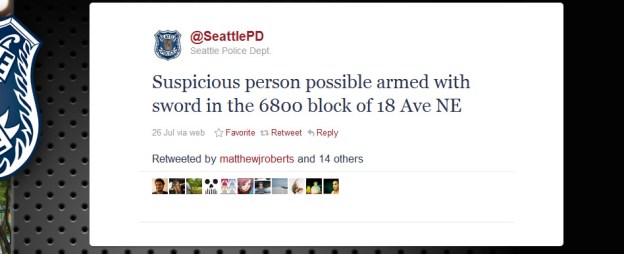
On Tuesday, the Seattle police department launched a 12-hour experiment that posted all 911 emergency calls into the official @SeattlePD Twitter feed. This test was intended to give the public a better understanding of the call volume and types of reports that flood into the emergency call centers. The flow of tweets began at 6 a.m. and sent about 40 tweets an hour into the feeds to about 10,000 followers. By 6 p.m., the account had increased by 478 tweets.

However, many followers praised the Seattle PD for attempting to educate the public around 911 calls. It also attracted new followers that enjoyed the flow of information similar to following a police scanner. This Twitter experiment inspired the Wichita Police department to try the same concept for an hour on July 28. The Seattle PD is said to be pleased with the results of the experiment and may create an automated feed of 911 calls in the future. The Seattle PD is are also planning another Twitter experiment for August, a “ride-along” with a police officer. During the day, the police office would submit tweets each time they responded to a 911 call as well as the outcome of the incident.
Providing a similar service, the Federal Communications Commission announced the inception of a national emergency alert service to send people texts about major disasters or missing children. This service (Personal Localized Alerting Network) is expected to be launched by the end of 2011 and will work with smartphones that contain authorized chips to receive the service.


